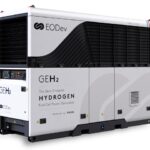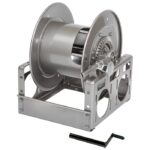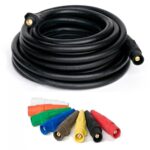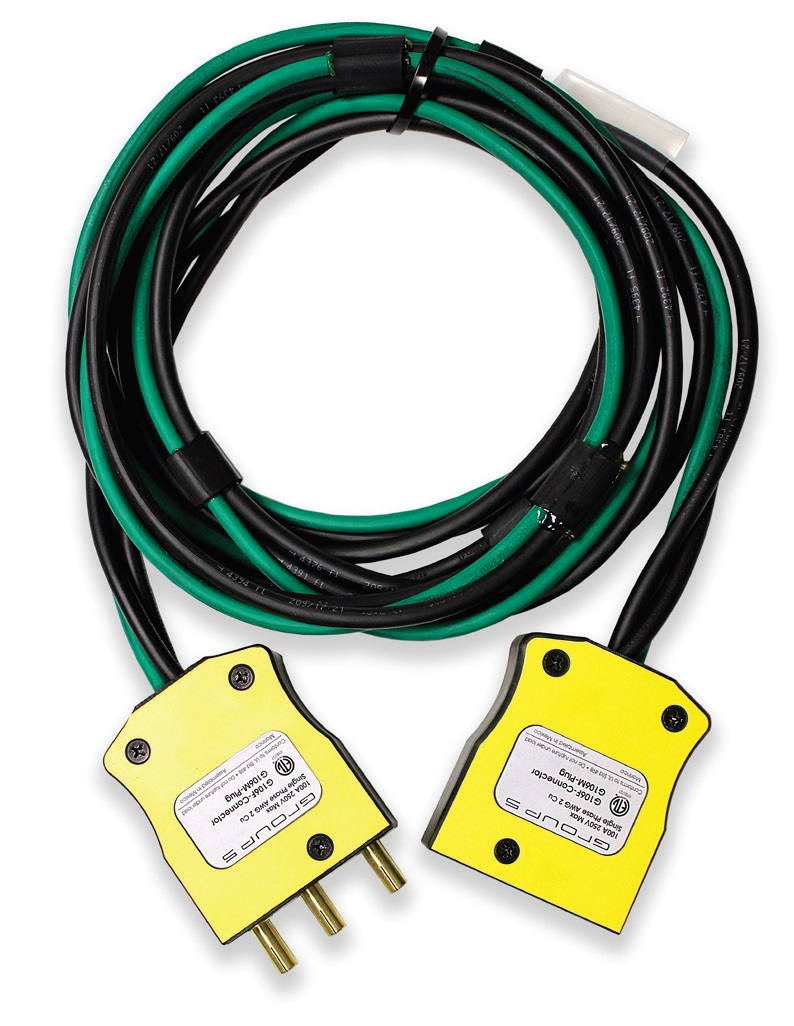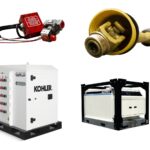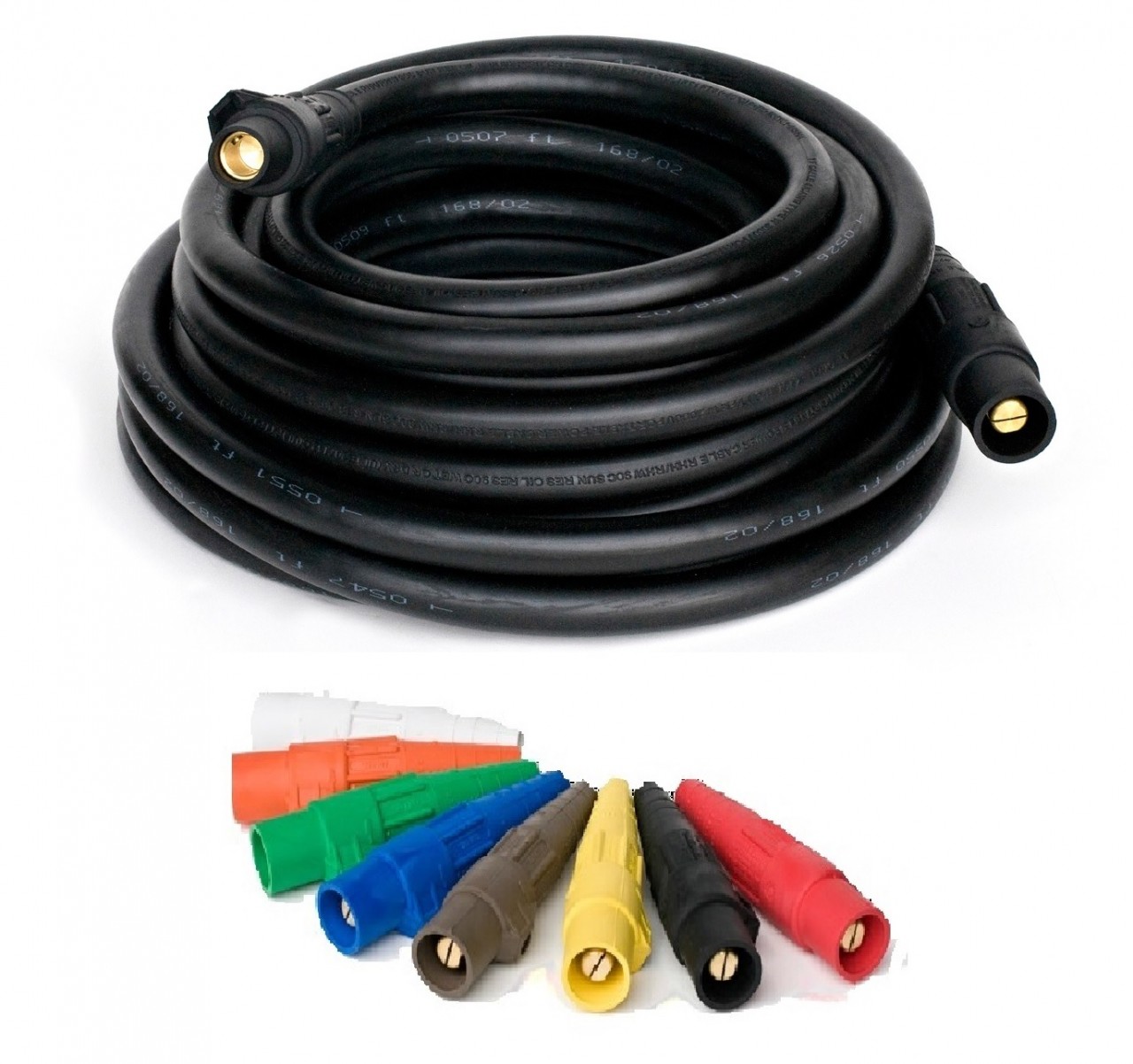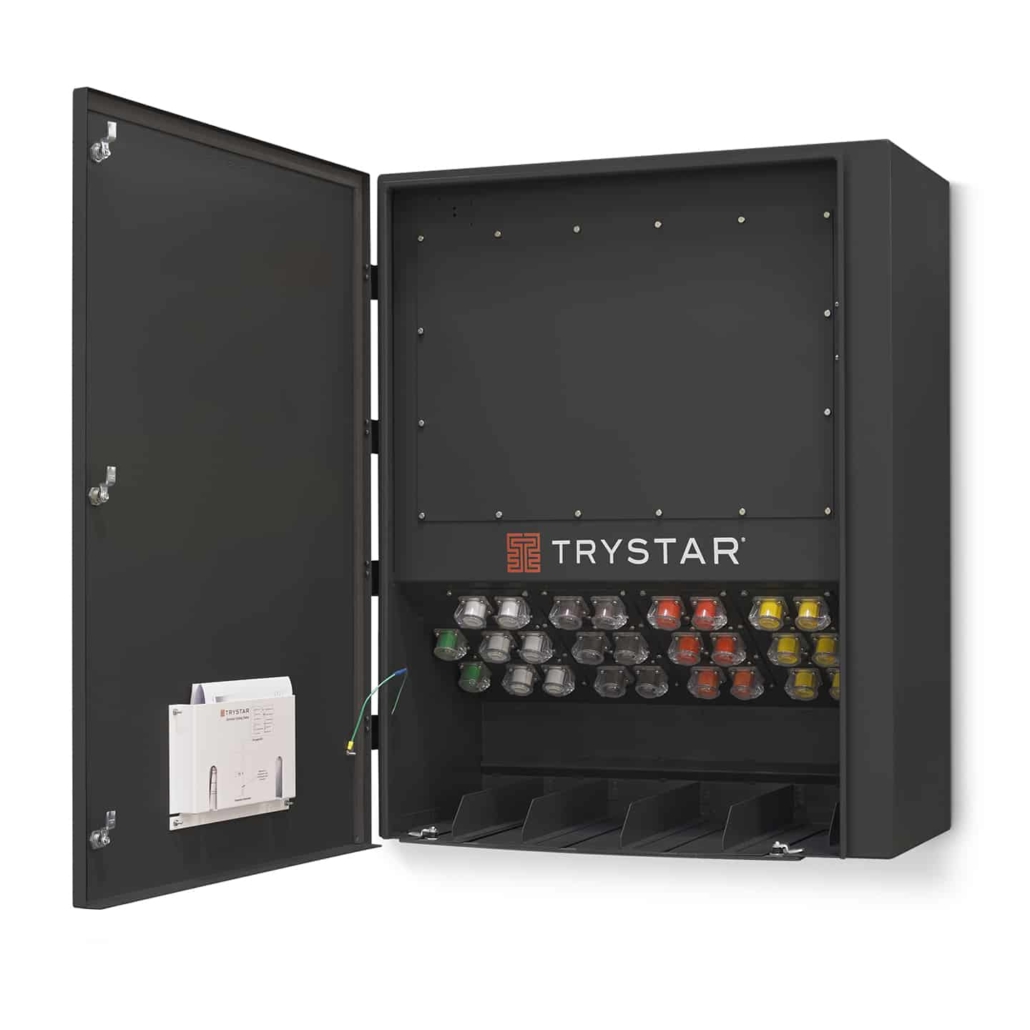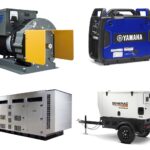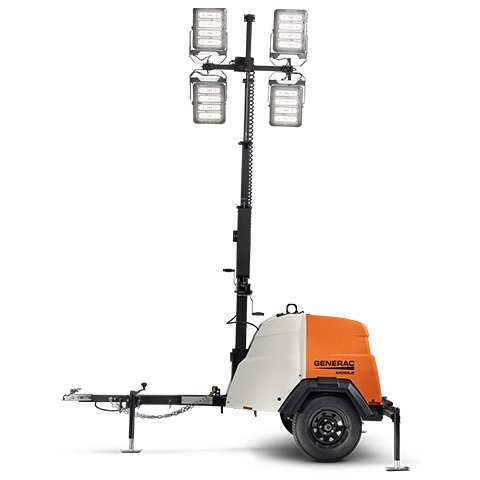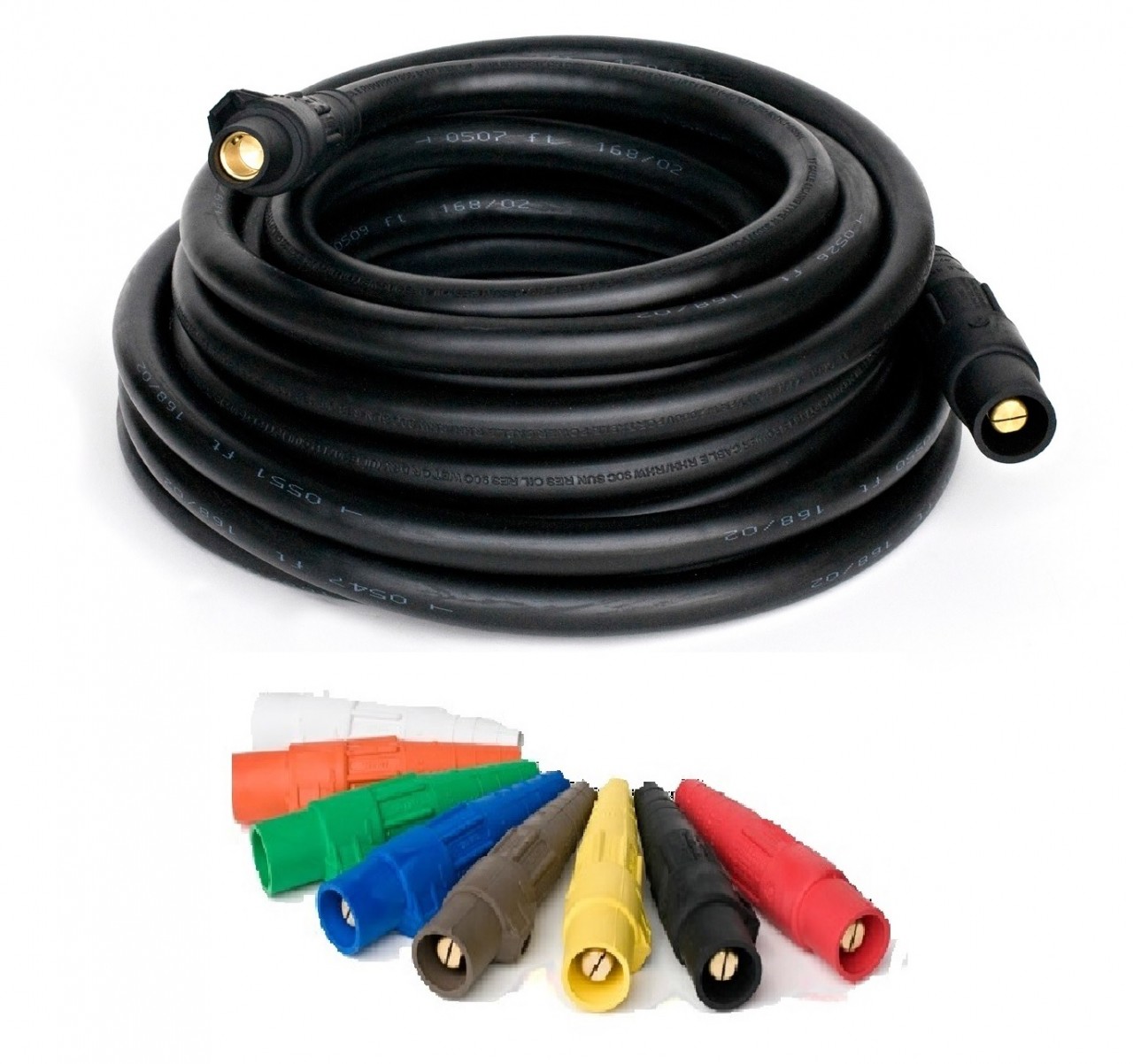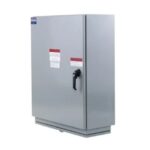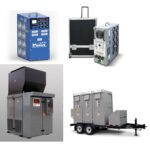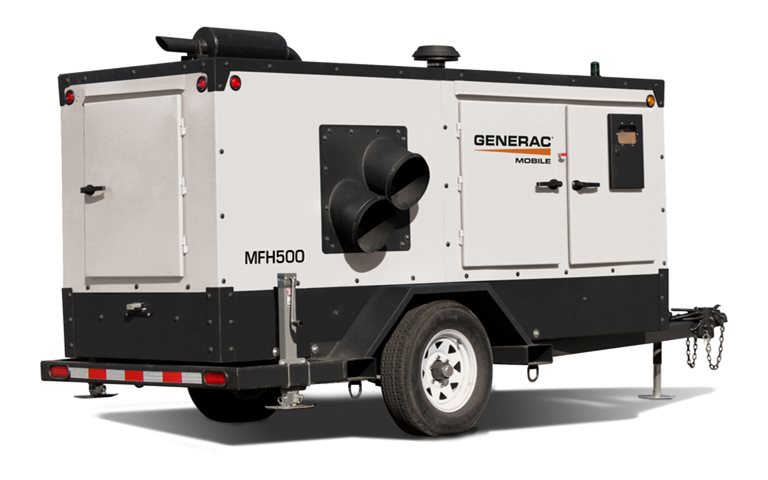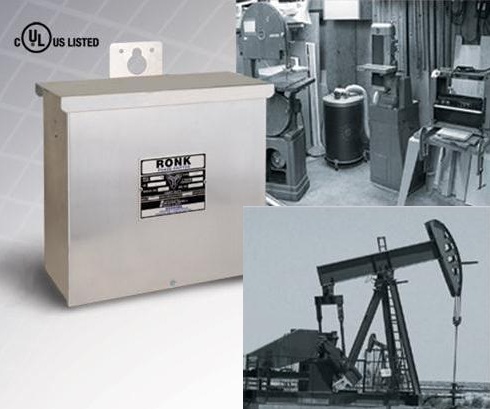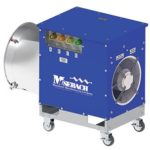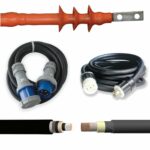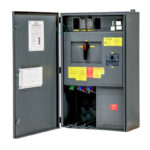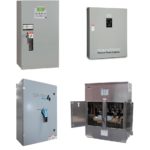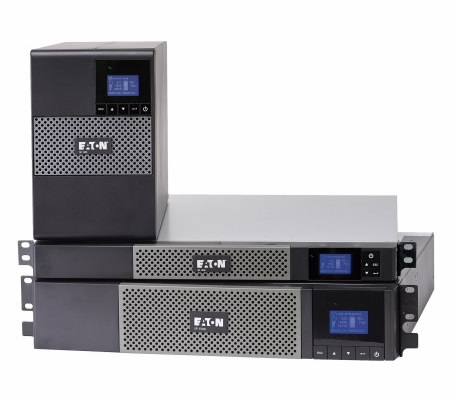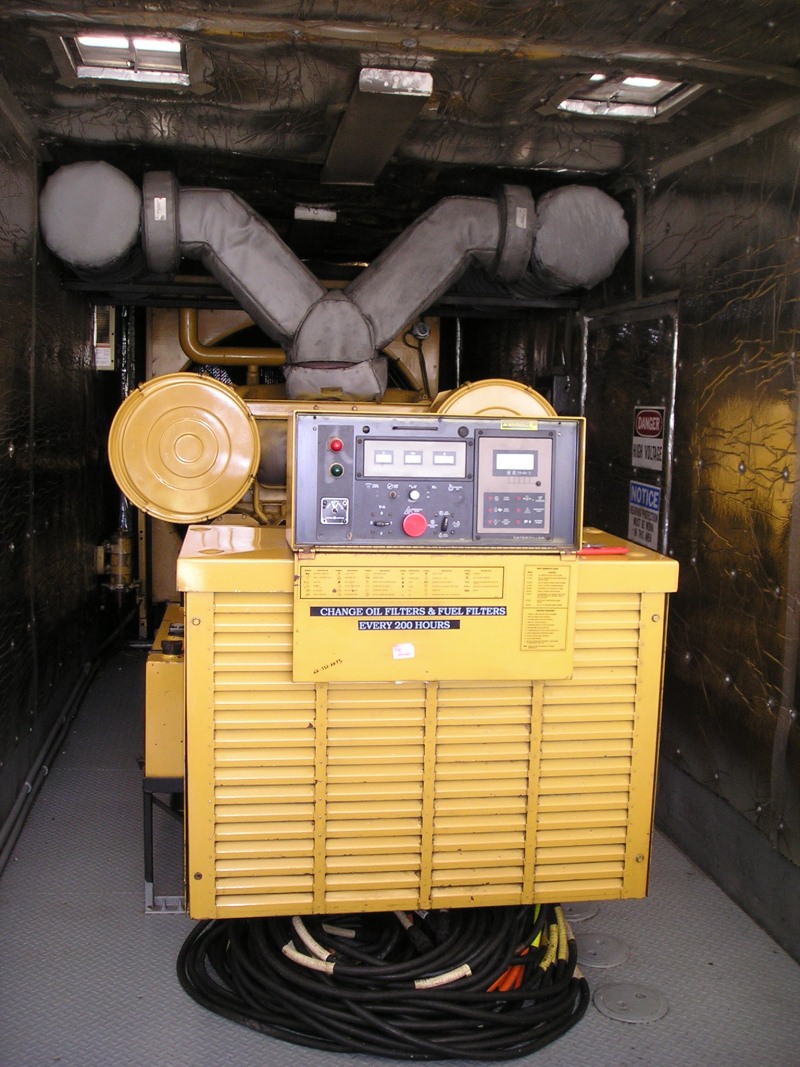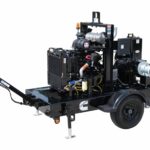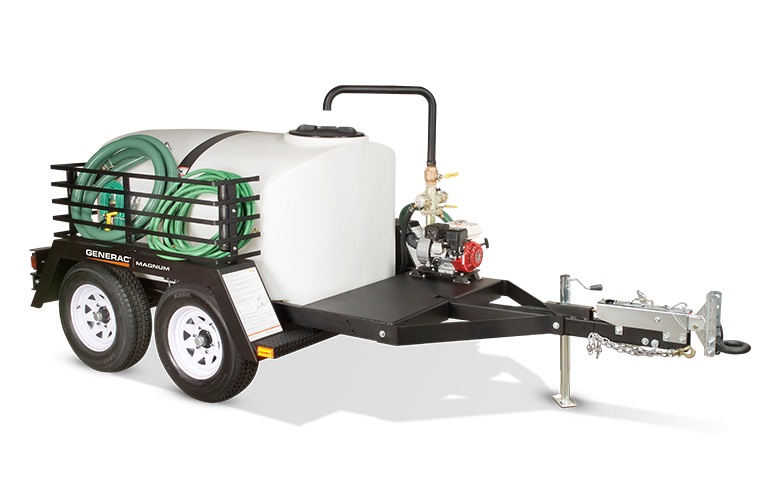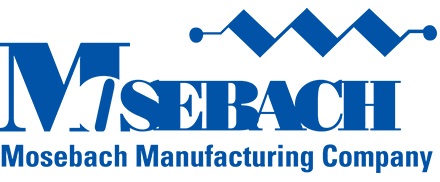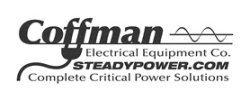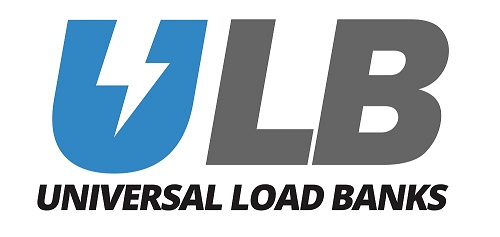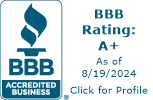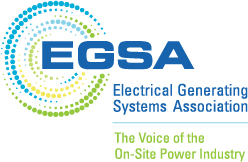Generator faqs
Portable RV/Recreational Generators: The inverter technology makes them super quiet for recreational use and also provides the cleanest power for sensitive electronics like computers. These generators run on gasoline.
Portable Residential Generators: A good choice to power essential items in your home when the power goes out (refrigerators, freezers, pumps, sump pumps, furnaces, lights, etc.) and for use around your yard (electrical tools, etc.). Most residential portable generators run on gasoline, but some models run on L.P., Natural Gas, or all three.
Portable Construction and Industrial Generators: These generators are the perfect choice for the job site and various industrial applications. Single phase gasoline or diesel models and three phase diesel models are available.
Mobile Towable Generators: These diesel generators provide a lot of transportable power for many industrial and construction applications. Switchable voltage models allow use with several different voltage applications. Single voltage models are for more defined single voltage applications.
Standby Generators: These stationary generators are designed to run most or all of your home or business when the power goes out. These generators are often used with an automatic transfer switch and starting system. Standby generators are also used for industrial and agricultural applications.
PTO Generators: Pair these generators with your tractor for portable power around your yard or farm.
Two Bearing Generators: These generators are powered by a variety of independent power sources using a pulley system – often used on service trucks.
Vehicle Mounted Generators: These generators are mounted on vehicles for emergency, spray foam, construction, oil field, and mining applications.
Welder Generators: Combines a generator with welding capabilities in one unit. Available in portable gasoline models and mobile diesel units.
Your portable generator must be used outside away from doors and windows. Visit www.takeyourgeneratoroutside.com for more vital information for safely using your generator.
Consider the following options when buying a portable generator:
Generator Use
Home Use: To run essential items in your home when the power goes out and for occasional use around your yard to run electrical tools, choose a Portable Residential Generator.
Recreational Use: For use with your RV, or for camping, tailgating, and boating, choose a quiet RV/Recreational Generator.
Industrial Use: For regular use on the construction site or other industrial applications, choose a Portable Construction/Industrial Generator.
Amount of Power Needed
After determining how you will use your generator, the next thing you need to determine is how much power (watts) you need. Important questions include:
- What items do you want to power from your generator?
- Do you want to power all of the items at the same time or separately?
- How much power does each item take to run and start? Please be aware that many items require more power to start up – usually two to three times their running watts.
- By adding up what you want to start and run at the same time, you can determine how big of a generator you need.
Power Output Quality
Another important issue is the quality of power coming from the generator. This is less of an issue if you want to use your generator to power electrical tools, pumps, lights, or appliances. But if you want to power sensitive electrical equipment, consistent power quality is key. Fluctuations in power can cause sensitive equipment to shut down or even damage the equipment. For use with sensitive electronics, consider purchasing a generator with AVR or getting an inverter generator:
- The Automatic Voltage Regulator (AVR) on many generators is designed to consistently control voltage. The AVR keeps the output voltage more constant, regardless of the load. This means no spikes or brownouts. Look for this feature under the description of the generator. Many models will also show the voltage regulation in the Specs.
- Inverters produce the smoothest, cleanest power available, making them ideal for use with sensitive electrical equipment like computers.
Receptacles
Of course you want to make sure the generator you buy has the receptacles you want to use. Common house receptacles are 5-15 (15A). If you are using a transfer switch to power items in your house, you will want a locking receptacle of 20A, 30A or 50A – depending on how much power you need. Locking receptacles start with an “L” – L5-20 (20A 120V), L14-20 (20A 120/240V), L5-30 (30A 120V), L14-30 (30A 120/240V), etc. Receptacle information is found in the Specs for each generator.
Noise level
- You can find the noise level (dBA) for most generators in the Specs section for each model. To give you some perspective: Normal speech is around 60 dBA. A vacuum cleaner runs around 70 dBA.
- Inverter generators are the quietest on the market, making them the first choice for recreation use. Their quiet operation also makes them popular for home use, but keep in mind the inverter technology makes them cost more than most other residential portable generators.
- If you need a relatively quiet generator for construction or industrial applications, consider MQ Power’s Whisperwatt mobile generators.
Fuel Type
Most residential portable generators use gasoline, but some run on L.P., Natural Gas, or all three. Industrial/construction generators run on gasoline or diesel.
Fuel Efficiency & Run time
If you plan to use your generator a lot, you will want to look for a generator that is both fuel efficient and has a long run time. Some generators adjust the engine speed (RPM) based on the load for greater fuel efficiency. Both fuel efficiency and fuel tank size will effect the run time. You can find the run time under the Specs for most generators.
Starting System
Smaller and less expensive models tend to have a recoil starting system. Larger and more expensive models often have an electric start. See the Specs for the generator to determine the starting system on each model.
Weight and Transportability
Smaller generators (up to 2000W) tend to be light enough to carry. Many larger portable generators have available wheel kits. Many models also have a lifting eye kit either installed or available. Really large wattage generators usually have available trailers for transportability.
Warranty
Warranties vary by manufacturer. The warranty information is provided for most models toward the bottom of the Specs.
Accessories
Different manufacturers offer various accessories to go with their generators – from covers to wheel kits to remote starts to lights and more. You can find many of the available accessories for each generator in the upper right side bar.
Cost
Each option comes with a price tag. Higher wattage, smoother power, less noise, electric start, inverter technology – all of these will increase the cost of your generator.
Once you have decided on the options that are best for you, go to the type of generator you have chosen:
- Portable RV/Recreational Generators
- Portable Residential Generators
- Portable Industrial/Construction Generators
Generators are listed by wattage, so you can easily compare the different options by clicking into each generator with your desired wattage.
If you would like further help in choosing a generator, please call us at 1-888-331-5344. We would be happy to assist you.
You have an RV, and you are shopping for a portable generator to power your air conditioner and appliances. The obvious question is:
How big of a generator do I need for my RV?
The answer to that question is very much determined by another:
How big of a generator do I need to run my RV air conditioner?
Your air conditioner will likely take the most wattage by far, so you need to start here. You also need to know that it takes more power to start the air conditioner than it does to keep it running. The minimum wattage of the generator you need is equal to the starting wattage of your air conditioner.
| Size of Air Conditioner | Approximate Starting Watts | Approximate Running Watts |
| 13,500 btu | 2800-3000W | 1500-2000W |
| 15,000 btu | 3300-3500W | 1300-1800W |
So a 3000W generator can start your 13,500 btu air conditioner. Once the air conditioner is running you could also run other select items. How much power might those other items take? The following chart will give you approximate power usage, but the best thing to do is check the tags or stickers on your electronic items:
| Item | Approximate Starting Watts | Approximate Running Watts |
| KITCHEN ITEMS: | ||
| RV Fridge | 600W | 180W |
| Coffee Maker (4 cup) | 600W | 600W |
| Slow Cooker | 170-270W | 170-270W |
| Microwave (650W) | 1000W | 1000W |
| Electric Grill (Counter-top) | 1700W | 1700W |
| ENTERTAINMENT ITEMS: | ||
| Small Flat TV | 120-200W | 120-200W |
| Small Tube TV | 300W | 300W |
| DVD Player | 350W | 350W |
| Satelite Receiver | 250W | 250W |
| Radio | 50-200W | 50-200W |
| Laptop Computer | 250W | 250W |
| OTHER ITEMS: | ||
| Hair Dryer (1600W) | 1900W | 1800W |
| Radiant Heater | 1300W | 1300W |
| Portable Fan | 120W | 40W |
| Lights | See Light Bulb | See Light Bulb |
At this point you also need to know that most generators have a max wattage rating and a running wattage rating. So a 3000W generator might give you up to 3000W to start that air conditioner, but for long term use might only be rated 2600W. So after your 3000W generator starts your 13,500 btu air conditioner which might run at 2000W, you have around 600W to use on other items. You might watch TV with your satelite receiver, or start your slow cooker while listening to the radio.
If you are going to use your RV fridge after starting your AC, you have only about 400W to use for other items:
3000 Max Watts: 600W Fridge Startup + 2000W AC Running + 400W Other
2600 Running Watts: 180W Fridge Running + 2000W AC Running + 420W Other
Needless to say, if you plan to use much more than your AC, fridge, and lights, you probably want a larger generator.
Another important factor in buying a portable RV generator is noise level. You don’t want your generator keeping you awake at night or disturbing any neighbors near by. Portable inverter generators are known for their quiet operation – around 50-65 dBA. Another chart might help:
| Activity | Noise Level |
| Normal Speech / Air Conditioner | 60 dBA |
| Vacuum Cleaner | 70 dBA |
| Hair Dryer | 80 dBA |
Every 10dBA increase is twice as loud as the earlier noise. So in the chart above, a vacuum cleaner is twice as loud as normal speech. A hair dryer is four times as loud as normal speech. So a little change in dBA makes a big difference.
One final factor in buying a portable RV generator is weight. The larger you go, the more it weighs. While most 3000-6500W generators include a wheel kit as a standard or optional feature, getting the generator in and out of your RV or truck is an important factor to consider. For a lighter option, consider buying two 2000W generators that can be linked in parallel to offer up to 3600W together. At less than 50 lbs each, this option is easily movable, and when you don’t need to run your AC, you may be able to use only one.
Now that we’ve considered wattage needed, noise level, and weight, let’s tie all of this information to real portable RV generators you might want to consider buying. Honda and Yamaha offer quality portable RV generators with excellent engines, quiet operation, and three year warranties. Don’t forget to buy a RV plug adapter if you aren’t buying a package!
Transfer switch faqs
A transfer switch is an electrical device that allows you to safely connect a generator to your household wiring. It is permanently installed near the service panel in your home to make using a generator as safe and easy as operating a light switch.
During a power outage, there are two ways to use a portable generator for power. The first is to run extension cords from the generator to your lights and appliances. However, this is inconvenient and does not allow you to operate some of your critical circuits like the furnace fan or well pump. The second way to use a generator is to connect it directly into your household wiring. Using only one cord, you can now power several or all of your most important household circuits, including the furnace fan and well pump. To do this, the National Electrical Code requires a transfer switch. Direct connection without a transfer switch can result in damage to your home and generator and great harm to utility workers.
A transfer switch prevents the utility power and the generator power from powering your household circuits at the same time. When the utility power goes out, you simply plug your generator into the transfer switch, start it up, and flip the transfer switch or switches from the UTILITY position to the GENERATOR position. The most important circuits in you home are now powered by the generator.
Kits (20-50A, 6-10 branch circuits) – These include a selected circuit transfer switch (see below), power inlet, and power cord. These indoor transfer switch kits are designed for fast installation in residential and small business applications.
Selected Circuit (20-50A, 6-10 branch circuits) – Designed for fast installation, these transfer switches transfer power to selected circuits in your load center. The flexible conduit whip attaches easily to the load center, and all wires are clearly marked. Simply select the circuits in the load center needed in an emergency and connect them to the wire leads. Ideal for residential and small business applications with an existing load center.
Single Circuit (15-50A) – These transfer switches are ideal for providing back-up power to furnaces or sump pumps, as well as other single-circuit applications. Economical and easy to install.
Main/Sub Transfer Panels (30-125A) – These models combine a circuit breaker box and a transfer switch. Suitable for use as a main panel or sub-panel. Service entrance rated and three pole GFCI models are available.
Generator Ready Load Centers (150-200A) – These models combine a transfer switch and load center in one convenient package. Includes a 150A or 200A utility main breaker and a 30A – 125A generator breaker. Provision for up to 38 branch circuits. Service Entrance Rated. Ideal for new residential and small business applications.
Whole House or Business (30-400A) – These switches are ideal for transfering power for your entire house, small business, garage, or pole-barn. Alternatively, these switches can be used to transfer power for an entire sub-panel in your home or business.
Commercial and Industrial (30-4000A) – These switches are designed for commercial, industrial, agricultural, telecom, and municipal applications. Single and three phase up to 600V. Open Transition (break-before-make) is standard. Numerous options available on select series, including Service Entrance Rated, Closed Transition, Delayed Transition, Dual Source, and Bypass Isolation.
load bank faqs
A load bank is a device designed to provide electrical loads for testing various power sources. Load banks are also used to provide additional loads to diesel generators to ensure the engine fully consumes the fuel in the combustion process, reducing “wet stacking” problems.
The load bank develops an electrical load, applies the load to an electrical power source, and converts or dissipates the resultant power output of the source. The load bank is intended to accurately mimic the operational or “real” load which a power source will see in actual application.
However, unlike the “real” load, which is likely to be dispersed, unpredictable, and random in value, a load bank provides a contained, organized, and fully controllable load. Consequently, a load bank can be further defined as a self-contained, unitized, systematic device which includes both load elements with control and accessory devices required for operation.
Where the “real” load is served by the power source and uses the energy output of the source for some productive purpose, the load bank serves the power source, using its energy output to test, support, or protect the power source.
Load Banks are used with Engine Generators, Battery Systems, UPS Systems, Inverters, Ground Power Units, Auxiliary Power Units, Aircraft Power Generators, Wind Generators, and Hydro Generators. Load Banks can be used for several purposes, including:
Manufacturing Testing
- Generator Test Cells: Manufacturers of standby power generators commonly use load banks to test and tune newly assembled units. When the generator has been set up in a test cell within the factory, a test engineer uses the load bank to apply a discrete, selectable electrical load to the generator and measure the response stability and endurance. During this process, the test engineer calibrates and adjusts the generator performance to ensure it meets the intended product specifications and tolerances.
- Engine Test Cells: Manufacturers of small gas engines also use load banks to test newly manufactured engines under various mechanical loads. This is accomplished by connecting the engine to the load bank via a device called a dynamometer. Again, engine performance is monitored and, if necessary, adjustments are made to ensure the product performs within intended specifications.
Field Testing & Exercise
Generators installed in the field must be periodically tested and exercised to ensure that it will operate as intended when a power outage actually occurs. Service groups use load banks to apply a load that mimics the load of the facility the generator is protecting. Any problems with the generator can then be identified and rectified in a non-critical environment.
Elimination of ‘Wet Stacking’
Load banks may be installed in a diesel powered generator set to apply the additional load required to ensure the engine fully consumes the fuel in the combustion process. If a diesel engine is not operated under adequate load, unconsumed fuel will collect in the engine’s exhaust stack, causing “wet stacking” problems.
Demonstration
Load banks are often used as tool for demonstrating to buyers and users of a new generator set that the unit meets the performance specifications outlined in the purchase contract.
And More – Load banks are also used for:
- UPS system testing
- Battery system testing
- Ground power testing
- Load optimization in prime power applications
- Factory testing of turbines
There are three types of load banks — resistive, reactive, and resistive/reactive:
Resistive
A Resistive load bank, the most common type, proves equivalent loading of both generator and prime mover. That is, for each kilowatt (or horsepower) of load applied to the generator by the load bank, an equal amount of load is applied to the prime mover by the generator.
A resistive load bank, therefore, removes energy from the complete system: load bank from generator—generator from prime mover—prime mover from fuel. Additional energy is removed as a consequence of resistive load bank operation: waste heat from coolant, exhaust and generator losses and energy consumed by accessory devices. A resistive load bank impacts upon all aspects of a generating system.
The “load” of a resistive load bank is created by the conversion of electrical energy to heat by power resistors. This heat must be dissipated from the load bank, either by air or by water, by forced means or convection.
In a testing system, a resistive load simulates real-life resistive loads, such as lighting and heating loads as well as the resistive or unity power factor component of magnetic (motors, transformers) loads.
Resistive load banks can be further divided into these categories:
- DC Portable: A resistive load bank easily carried or pushed on wheels for testing and maintaining DC power equipment such as battery chargers, battery systems, UPS systems, and DC generators.
- AC Portable: A resistive load bank easily carried or pushed on wheels for testing and maintaining AC power equipment such as UPS systems and generators up to 1000 kW.
- AC Trailer Mounted: A resistive load bank loaded on a trailer for testing and maintaining AC power equipment such as UPS systems and generators at different sites up to 3000 kW.
- AC Stationary: A resistive load bank for testing and maintaining AC power equipment such as UPS systems and generators at one location up to 5000 kW. Many models can be used as modular building blocks for applications requiring capacity of tens or hundreds of megawatts.
- AC Medium/High Voltage: A resistive load bank for testing and maintaining larger generators and other AC power equipment up to 7000 kW and up to 15,000 volts.
- AC Radiator Cooled: A resistive load bank for testing and maintaining AC power equipment utilizing the radiator air outflow of a generator engine to cool the resistive load elements. These load banks can be adapted to fit varying site conditions and duct dimensions. Available up to 1500 kW.
- AC Water-Cooled: A resistive load bank for testing and maintaining AC power equipment utilizing water instead of air for cooling the resistive load elements. Perfect for environments requiring super-quiet operation. Available up to 2500 kW.
Reactive
A “reactive” load includes inductive (lagging power factor) and/or capacitive (leading power factor) loads.
Inductive
Inductive loads, the more common type, consist of iron-core reactive elements which, when used in conjunction with a resistive load bank, create a lagging power factor load. Typically, the inductive load will be rated at a numeric value 75% that of the corresponding resistive load such that when applied together, a resultant 0.8 power factor load is provided. That is to say, for each 100KW of resistive load, 75KVAR of inductive load is provided. These reactive load banks are available up to 1875 kVAR.
Other ratios are possible to obtain other power factor ratings. Inductive loads are used to simulate real-life mixed commercial loads consisting of lighting, heating, motors, transformers, etc.
With a resistive/inductive load bank, full power system testing is possible given the impact of reactive currents on generator/voltage regulator performance as well as effects on conductors and switchgear.
Capacitive
A capacitive load bank is similar to a reactive load bank in rating and purpose, except that leading power factor loads are created. These loads simulate certain electronic or non-linear loads typical of telecommunications, computer or UPS industries. These capacitive load banks are available up to 2000 kVAR.
Resistive/Reactive Load Banks
Resistive/reactive load banks combine both resistive and reactive elements in one load bank package up to 6250 kVA.
If you have further questions, or would like help selecting a load bank for your specific application, please call us at 1-888-331-5344.
For a price quote on load banks, please call, fax or e-mail us:
Call: 1-888-331-5344
Fax: 1-616-452-1337
E-mail: customerservice@steadypower.com
In order to give you an accurate price quote, we will need the following information:
- Name, Title, Company, Phone, Fax, E-mail
- Shipping Address with Zip Code (for shipping cost)
- Manufacturer and Model (if known)
- Form: Portable, Trailer-Mounted, Stationary, Radiator
- Enclosure: Indoor (Type 1) or outdoor (Type 3R)
- Type: Resistive only, Reactive only, Resistive/Reactive
- Total Capacity: kW rating
- Voltage, AC or DC, Phase, Frequency, Power Factor
- Load step resolution (minimum load step size required)
- Local or remote control panel
- Automatic load regulating or manual control
- Any additional information or options desired
- Is there a specification you are working from? If so, can you send?
- Component panel side (Radiator-cooled only)
- Mounting requirements – feet, flange, etc. (Radiator-cooled only)
